Abstract
A technique using 'tritiated thymidine suicide' has been established as a means of studying the response to cytotoxic drugs of cells at different depths within multicellular tumour spheroids. Because of the characteristic spatial arrangement of cycling cells (mostly in the outer regions) and non-cycling cells (mostly at the inner regions) of spheroids, cells surviving after long term (24 h) exposure of spheroids to high doses of 3HTdR will be those located furthest from the surface. By comparing the drug response of cells from 3HTdR pre-treated and untreated spheroids, the individual response of total cells, cells near to the surface and cells lying deeper within the viable rim of spheroids can therefore be deduced. In this study, large spheroids of about 800 micron in diameter of a mouse mammary cell line, EMT6/Ca/VJAC, and of a human small cell lung cancer cell line, POC, have been used. Using clonogenic assay, the response of these two cell types to adriamycin (ADM), nitrogen mustard (HN2), CCNU and vincristine (VCR) (POC only) were measured. The preliminary part of this study has confirmed that the cells killed are those which incorporate 3HTdR during the DNA synthesis period; the cells killed are mainly located in the outer regions of spheroids i.e. surviving cells are mostly located in the inner part of the viable rim and 3HTdR pretreatment does not sensitise surviving cells to subsequent cytotoxic drug treatment. Results from large EMT6 spheroids agree with our previous findings (obtained using a selective disaggregation method) that cells in the outer regions of spheroids are more sensitive to ADM and HN2 than cells in the inner regions whilst the opposite is true for CCNU. For POC spheroids, cells in the outer region of spheroids are more sensitive to ADM and VCR than cells in the inner region whilst a reverse trend is seen for the response to CCNU. The response to HN2 is similar at all depths. Amongst the factors governing the response of cells in spheroids to cytotoxic drugs, the responses to ADM and VCR are thought to be largely dictated by cell cycle distribution and limited drug penetrability, whilst for HN2 the response may be determined by the factor of cell cycle distribution. For CCNU, we believe that the cellular response is largely dependent upon microenvironmental factors prevailing within spheroids.
Full text
PDF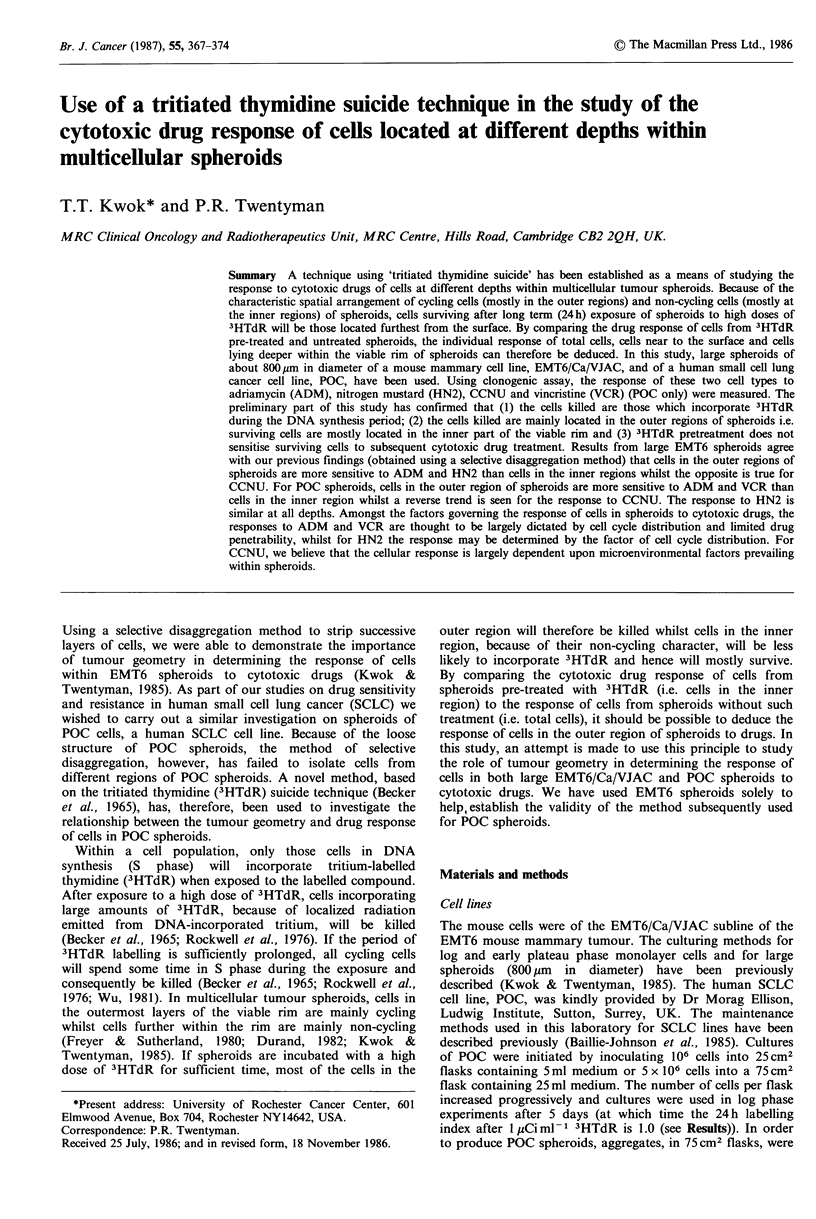
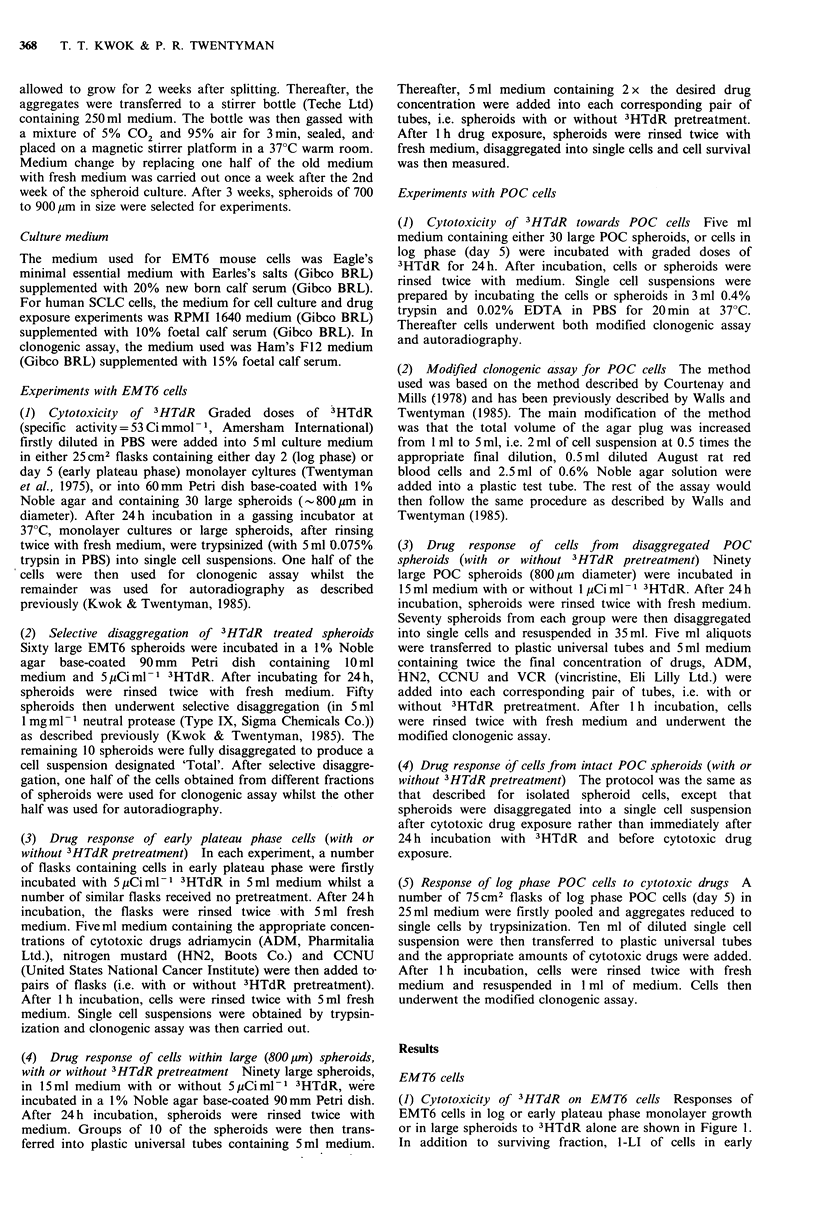
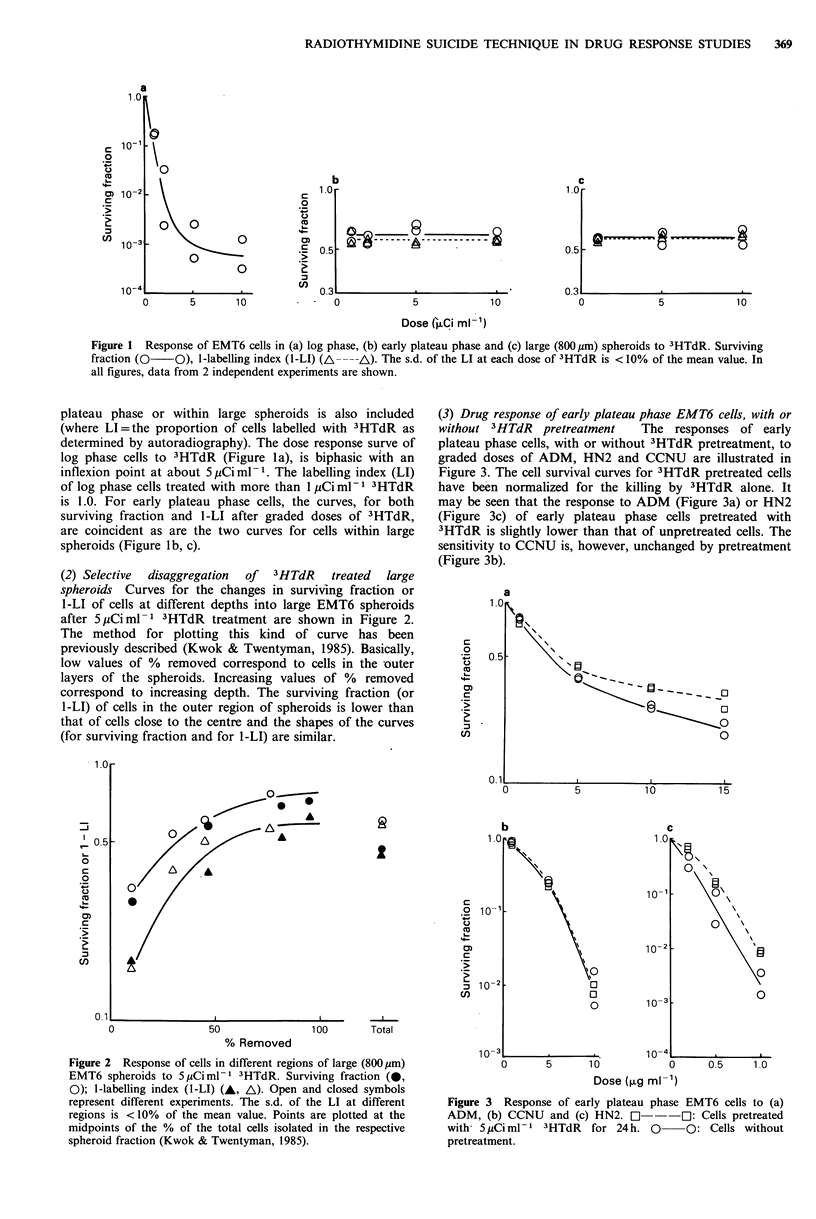
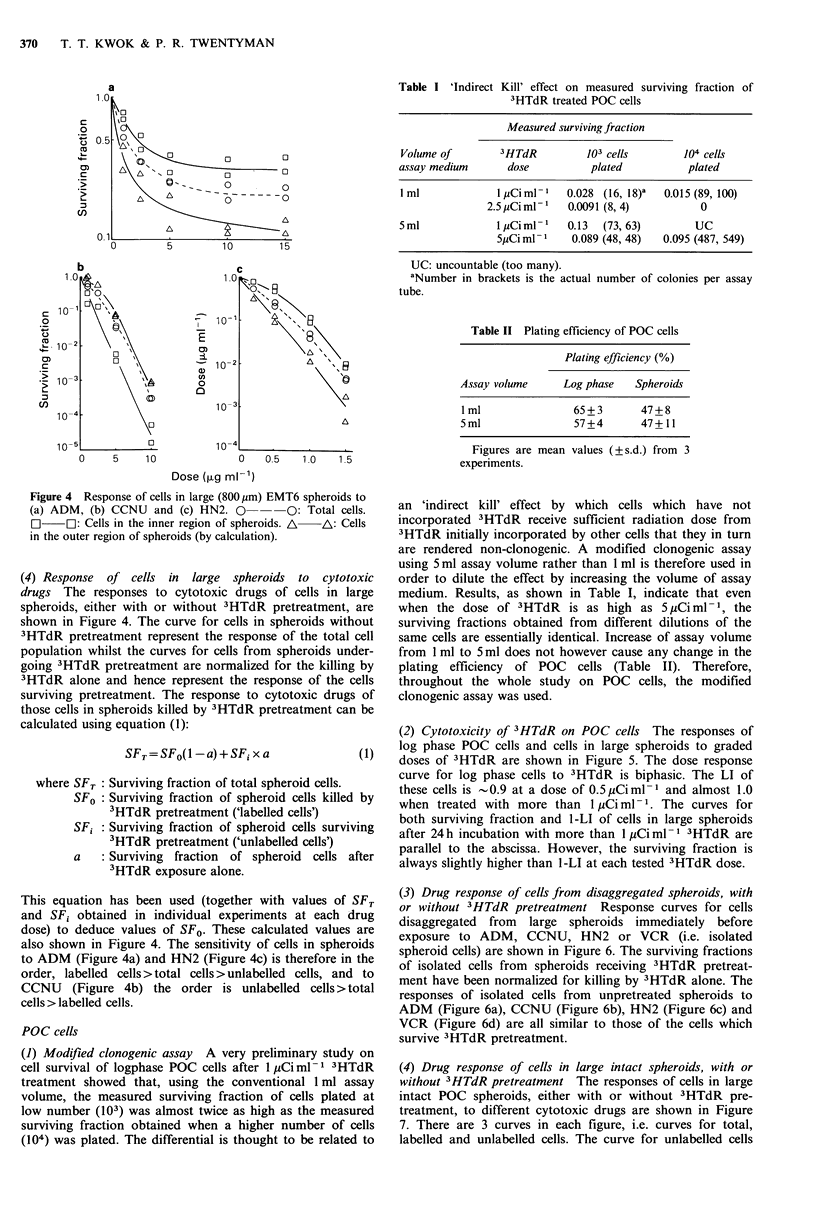
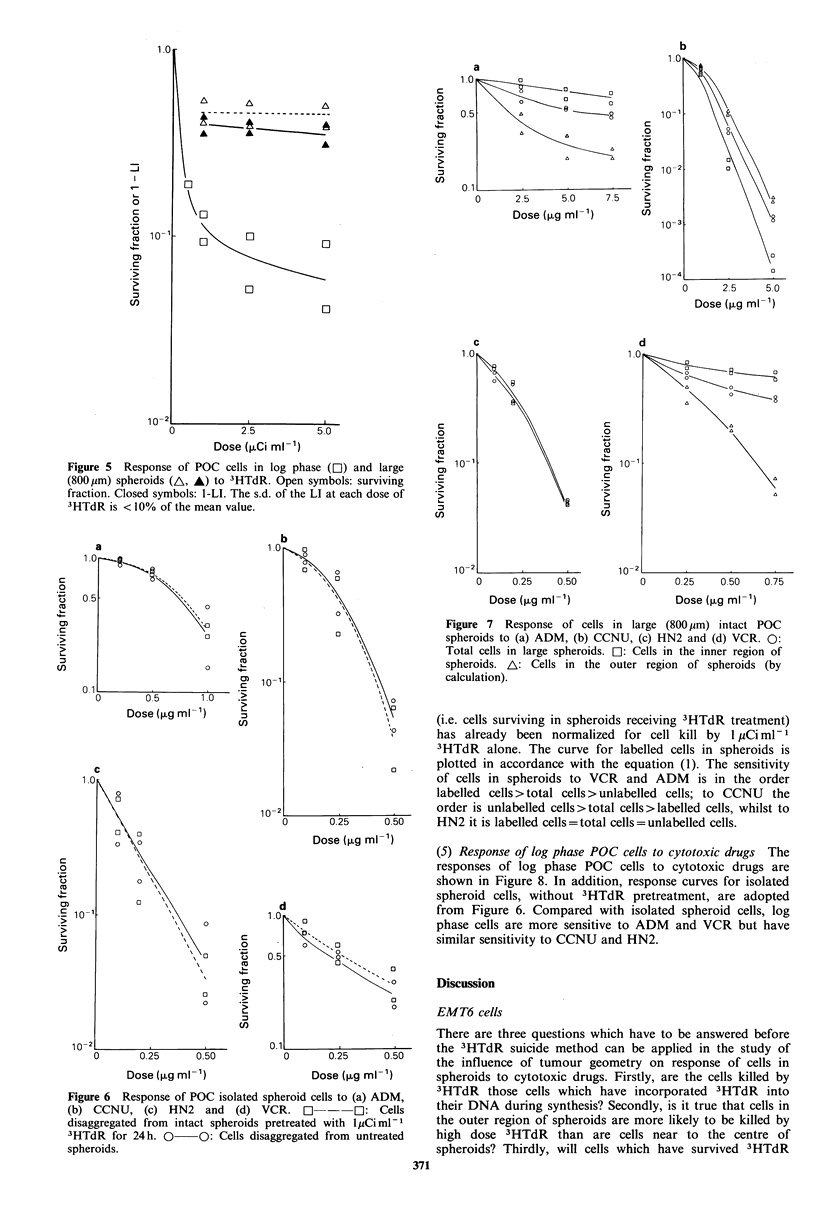
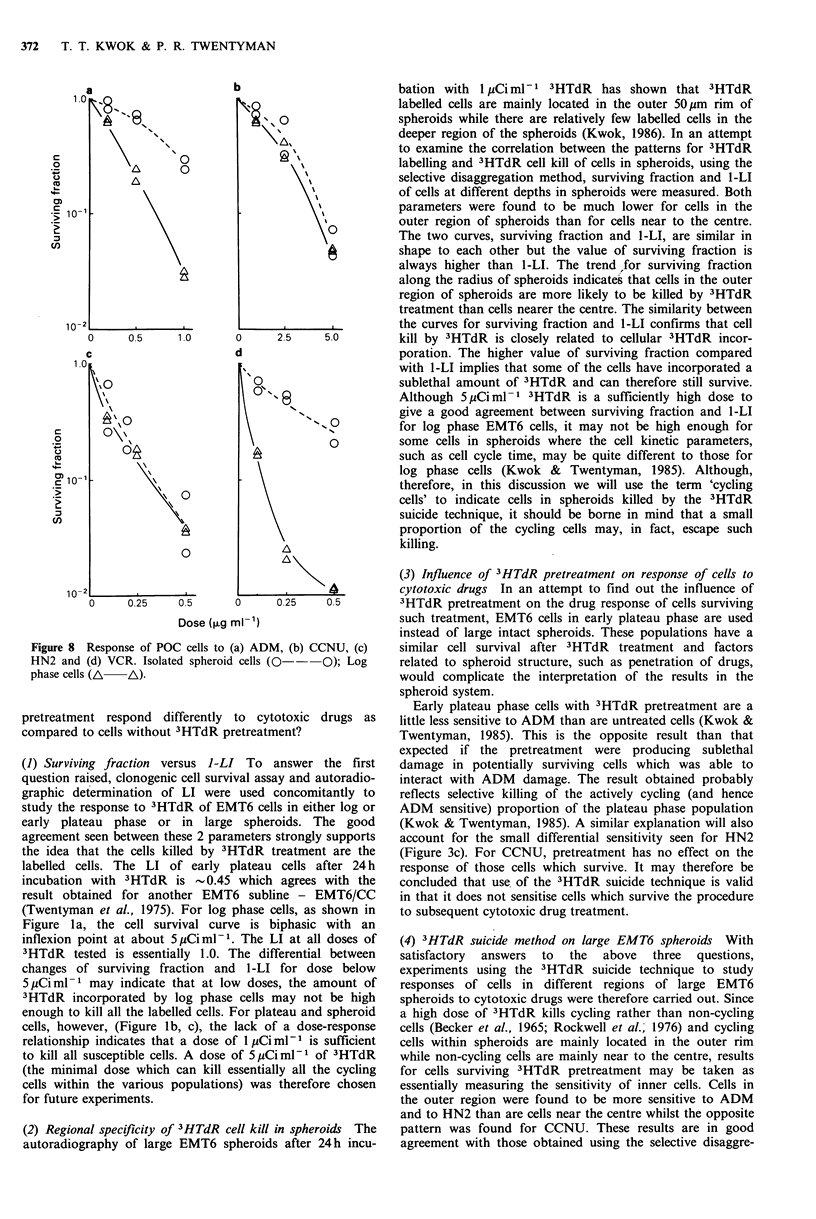
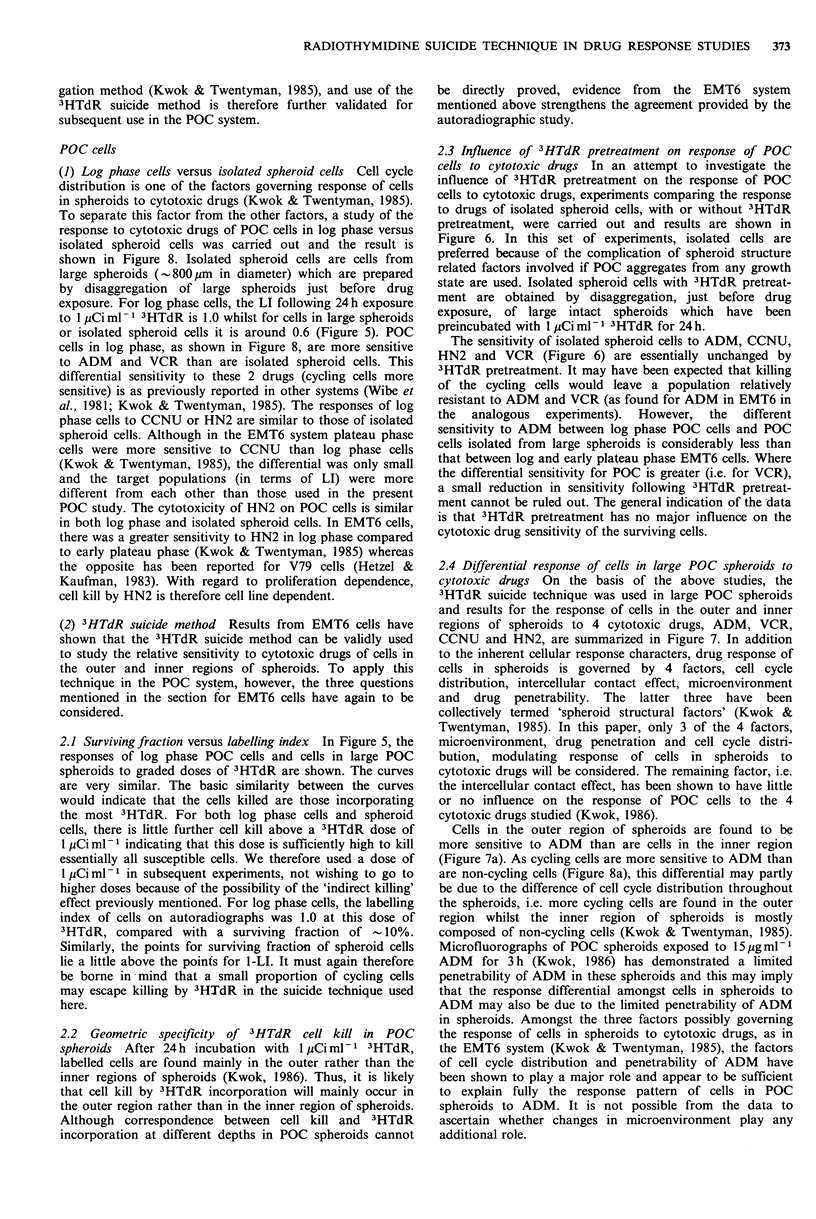
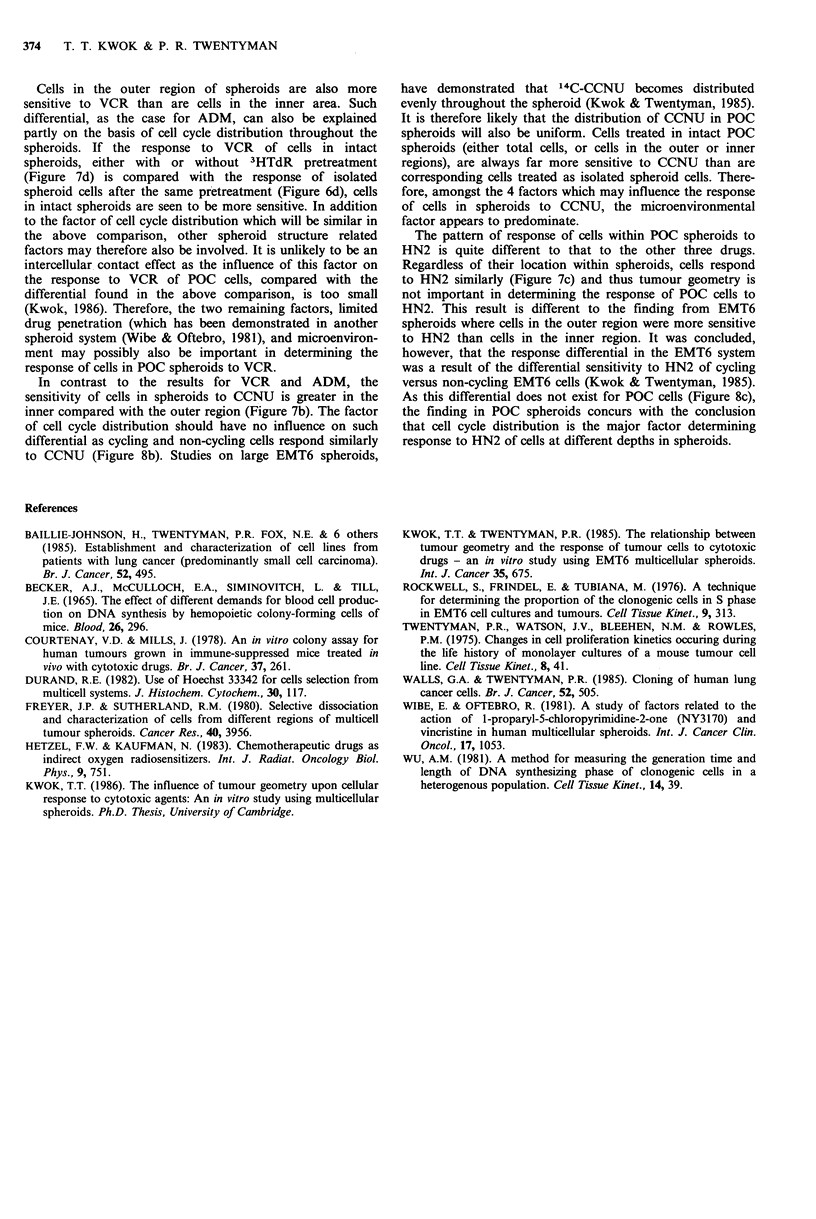
Selected References
These references are in PubMed. This may not be the complete list of references from this article.
- BECKER A. J., MCCULLOCH E. A., SIMINOVITCH L., TILL J. E. THE EFFECT OF DIFFERING DEMANDS FOR BLOOD CELL PRODUCTION ON DNA SYNTHESIS BY HEMOPOIETIC COLONY-FORMING CELLS OF MICE. Blood. 1965 Sep;26:296–308. [PubMed] [Google Scholar]
- Baillie-Johnson H., Twentyman P. R., Fox N. E., Walls G. A., Workman P., Watson J. V., Johnson N., Reeve J. G., Bleehen N. M. Establishment and characterisation of cell lines from patients with lung cancer (predominantly small cell carcinoma). Br J Cancer. 1985 Oct;52(4):495–504. doi: 10.1038/bjc.1985.220. [DOI] [PMC free article] [PubMed] [Google Scholar]
- Courtenay V. D., Mills J. An in vitro colony assay for human tumours grown in immune-suppressed mice and treated in vivo with cytotoxic agents. Br J Cancer. 1978 Feb;37(2):261–268. doi: 10.1038/bjc.1978.35. [DOI] [PMC free article] [PubMed] [Google Scholar]
- Durand R. E. Use of Hoechst 33342 for cell selection from multicell systems. J Histochem Cytochem. 1982 Feb;30(2):117–122. doi: 10.1177/30.2.6174559. [DOI] [PubMed] [Google Scholar]
- Freyer J. P., Sutherland R. M. Selective dissociation and characterization of cells from different regions of multicell tumor spheroids. Cancer Res. 1980 Nov;40(11):3956–3965. [PubMed] [Google Scholar]
- Hetzel F. W., Kaufman N. Chemotherapeutic drugs as indirect oxygen radiosensitizer. Int J Radiat Oncol Biol Phys. 1983 May;9(5):751–757. doi: 10.1016/0360-3016(83)90244-4. [DOI] [PubMed] [Google Scholar]
- Kwok T. T., Twentyman P. R. The relationship between tumour geometry and the response of tumour cells to cytotoxic drugs--an in vitro study using EMT6 multicellular spheroids. Int J Cancer. 1985 May 15;35(5):675–682. doi: 10.1002/ijc.2910350517. [DOI] [PubMed] [Google Scholar]
- Rockwell S., Frindel E., Tubiana M. A technique for determining the proportion of the clonogenic cells in S phase in ENT6 cell cultures and tumors. Cell Tissue Kinet. 1976 Jul;9(4):313–323. doi: 10.1111/j.1365-2184.1976.tb01279.x. [DOI] [PubMed] [Google Scholar]
- Twentyman P. R., Watson J. V., Bleehen N. M., Rowles P. M. Changes in cell proliferation kinetics occurring during the life history of monolayer cultures of a mouse tumour cell line. Cell Tissue Kinet. 1975 Jan;8(1):41–50. doi: 10.1111/j.1365-2184.1975.tb01205.x. [DOI] [PubMed] [Google Scholar]
- Walls G. A., Twentyman P. R. Cloning of human lung cancer cells. Br J Cancer. 1985 Oct;52(4):505–513. doi: 10.1038/bjc.1985.221. [DOI] [PMC free article] [PubMed] [Google Scholar]
- Wibe E., Oftebro R. A study of factors related to the action of 1-propargyl-5-chloropyrimidin-2-one (NY 3170) and vincristine in human multicellular spheroids. Eur J Cancer Clin Oncol. 1981 Sep;17(9):1053–1059. doi: 10.1016/s0277-5379(81)80013-2. [DOI] [PubMed] [Google Scholar]
- Wu A. M. A method for measuring the generation time and length of DNA synthesizing phase of clonogenic cells in a heterogenous population. Cell Tissue Kinet. 1981 Jan;14(1):39–52. doi: 10.1111/j.1365-2184.1981.tb00509.x. [DOI] [PubMed] [Google Scholar]


